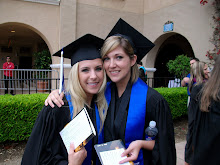Inspiring Students with Peer Tutoring
By Brandy Smith
This article discusses an idea that was formulated to better acquaint children with technological applications through peer tutoring. By allowing students to teach each other computer skills, they are able to strengthen their leadership, communication, and delegation skills. An idea to better acquaint children with technology was an after school tech club. In the club, there are several student leaders, or “tech kids” that are trained to facilitate technology “how-to” sessions in their third grade classrooms. These children are selected based on several different criteria, not solely on their academic or technological abilities.
Peer tutoring allows the students to teach one another, rather than the teacher desperately trying to spend ample time instructing each individual student. This technique allows students to work and learn technology skills collaboratively opposed to individually and in isolation. By working together, or in small groups the demand for a large number of computers is also diminished. According to Smith (2007), “If other students are able to assist their peers with technology issues, it means the teacher can focus on the learning.” The tech club was created to heighten student’s excitement and increase their knowledge in regards to technology. In doing this, they will be able to also assist their teachers when using a technology tool in the classroom setting. Smith (2007) also explains that the objectives for the club were directed by the district’s technology integration plan. This led to the appropriate integration sills necessary for this curricular area of study.
One of the main requirements needed for peer tutoring to be successful is a teacher allowing the technological integration into the classroom. Properly integrating technology into lesson plans can often be a predicament due to teacher’s lack of knowledge of the technology or lack of resources, or lack of time to learn the basics of the specific technology. Through peer tutoring, many of these predicaments can be eliminated. The tech club and peer tutoring demonstrate how to successfully teaching technology skills can be accomplished.
If I were to implement a “tech club” at my school, how would I go about training the tech kids?
Each day I would choose a different skill or objective to focus on. After going through each skill slowly as a group, I would allow the students to ask any questions. I would then give them time to practice the skill that they learned while making myself available for individual questions and assistance. Then, I would test the student’s ability to complete this skill by having the students perform each skill without my assistance. Next, I would have them get into small groups to practice teaching the skill. This would help with their peer tutoring and interaction abilities.
Do I think that peer tutoring is useful?
Absolutely! Not only does it strengthen the knowledge of the student teachers, but also it allows the other students to learn through their peers, possibly making the learning process more interesting. I also believe that it alleviates potential stressful situations for the teacher by limiting the amount of computers needed and allowing the teacher not to feel as if they are spreading themselves too thin amongst the students.



